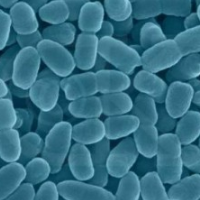Weak Vaccine, Unvaccinated Pregnant Women Nurture Worst Whooping Cough Epidemic in 70 Years
 Bordetella pertussis bacteria
Bordetella pertussis bacteria
Whooping cough hasn’t been this bad in California in 70 years, and health professionals probably laid the groundwork for it in the 1990s.
There have been 9,935 reported cases of the disease, formally known as pertussis, in the state this year as of November 26, topping the 9,000 or so in 2010. Pertussis is a highly contagious respiratory disease that can be passed through coughing and sneezing. The California Department of Public Health (CDPH) declared a whooping cough epidemic in June.
Unlike some diseases whose escalation has been linked to anti-vaccine sentiments, this one has not. Whooping cough runs on a 3-to-5-year cycle, so an increase was not unexpected. But an analysis of the surge by researchers for the federal Centers for Disease Control and Prevention (CDC) seemed to confirm what was suspected in 2010: a new, acellular vaccine phased in between 1992 and 1997 has proven to lose its effectiveness quicker than its whole-cell predecessor, which had been used since the 1940s.
The new vaccine is safer for those receiving it, but seems to put the general population more at risk. Those risks can be mitigated, but apparently weren’t. Infants under the age of 1 are most at risk of hospitalization and death from pertussis. That’s before they would get the vaccine themselves, but the CDC report said pregnant moms should have been getting it for them in their third trimester.
The CDC’s Advisory Committee on Immunization Practices recommended in October 2011 that unvaccinated pregnant women get a dose of vaccine, studied that decision some more and amped up its warning in February 2013.
But the researchers found that “very few mothers of infants with pertussis had received Tdap during pregnancy.” A 2012 survey found that just 19.5% of pregnant women were vaccinated. A limited 2013 study of 100 births found 25% were vaccinated.
While 26 out of every 100,000 Californians contracted whooping cough, 175 out of 100,000 infants under 12 months got it. Hispanic infants are by far the most susceptible, according to the CDC. They say they don’t know why but speculate it’s cultural things like larger families and shared hands-on care of infants. After the age of 1, Hispanics get whooping cough about like everyone else.
The report reiterated the directive: “Prenatal care providers should vaccinate all pregnant patients with Tdap during the third trimester of each pregnancy.”
The researchers found that the incidence of whooping cough increased every year from infancy until the 14-16 group. In 2010, they found that peak was 10-year-olds. That would correspond to a theory that the potency of the new vaccine received by these kids was waning fast. They suggested that booster shots be considered, but said not enough was presently known about the benefits and safety.
What they can do is give pregnant moms their shots. If nothing is done, the report warns, “It is likely that the ‘new normal’ will be higher disease incidence throughout pertussis cycles.”
–Ken Broder
To Learn More:
CDC Links Calif. Pertussis Epidemic to Less Effective Vaccine (by Rebecca Plevin, KPCC)
Whooping Cough Cases Rise in California: Check for Symptoms (by Rhodi Lee, Tech Times)
California Infants Hit Hard by Whooping Cough Epidemic: Report (U.S. News & World Report)
Pertussis Epidemic—California, 2014 (by Kathleen Winter, Carol Glaser, James Watt, Kathleen Harriman, Centers for Disease Control and Prevention)
California Whooping Cough Epidemic Connected to Anti-Vaccine Parents (by Ken Broder, AllGov California)
- Top Stories
- Controversies
- Where is the Money Going?
- California and the Nation
- Appointments and Resignations
- Unusual News
- Latest News
- California Forbids U.S. Immigration Agents from Pretending to be Police
- California Lawmakers Urged to Strip “Self-Dealing” Tax Board of Its Duties
- Big Oil’s Grip on California
- Santa Cruz Police See Homeland Security Betrayal in Use of Gang Roundup as Cover for Immigration Raid
- Oil Companies Face Deadline to Stop Polluting California Groundwater




